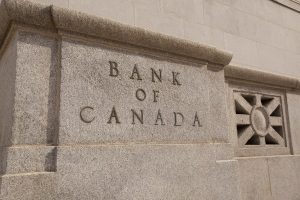Articles
Posted on September 4, 2019
Bank of Canada Holds Overnight Rate Steady Amid Uncertainty
 The Bank of Canada held the target overnight rate at steady at 1.75% for the seventh consecutive decision date but will monitor closely the impact of the US-China trade war on economic activity around the world and in Canada. The second-quarter growth–posted at 3.7%–exceeded the Bank’s forecast in the July Monetary Policy Report (MPR), but the Bank expects the economy to slow from that pace in the second half of the year.
The Bank of Canada held the target overnight rate at steady at 1.75% for the seventh consecutive decision date but will monitor closely the impact of the US-China trade war on economic activity around the world and in Canada. The second-quarter growth–posted at 3.7%–exceeded the Bank’s forecast in the July Monetary Policy Report (MPR), but the Bank expects the economy to slow from that pace in the second half of the year.
Q2 was boosted by stronger energy production and robust export growth, both recovering from a weak Q1 performance. But evidence suggests that export growth slowed in July and could weaken further as the global economy slows. Canada bears the brunt of Chinese trade restrictions on Canadian agricultural imports. Housing activity also boosted the expansion in the second quarter as resales and housing starts picked up. Falling longer-term interest rates have driven down mortgage rates. The Bank asserted that “this could add to already-high household debt levels, although mortgage underwriting rules should help to contain the buildup of vulnerabilities.”
Wages picked up further last quarter, boosting labour income, yet consumption spending was unexpectedly soft. Canadian consumer confidence recorded its most significant monthly drop this year in August amid growing concerns about the global economic outlook. The setback reflects waning optimism about Canada’s economy and effectively reverses the pick-up in sentiment earlier this summer.
The deterioration in confidence coincides with the escalation of the U.S.-China trade war. Many Canadians increasingly worried they’ll soon feel a bigger impact. Consumers aren’t the only ones feeling the uncertainty as business investment weakened sharply in the second quarter. Trade tensions have hit farmers and manufacturers hardest. The U.S. implemented additional tariffs on China September 1 and have slated more on December 15. These include duties on clothing and electronics, will pinch US consumers where it hurts, in the pocketbooks. These moves will sideswipe Canada.
Despite all of this gloom, the central bank held off from signalling explicitly any immediate need to cut interest rates. While growth has been stronger than expected, inflation has remained on target.
“In sum, Canada’s economy is operating close to potential and inflation is on target. However, escalating trade conflicts and related uncertainty are taking a toll on the global and Canadian economies,” the central bank said in its statement. “In this context, the current degree of monetary policy stimulus remains appropriate.”
Market Interest Rates Are Tumbling
The Bank prefers to wait for more concrete evidence that the economy is in need of additional stimulus. Despite this, market interest rates have fallen to record lows in Canada and elsewhere and the yield curve is inverted. Government of Canada 5-year yields have slid from 1.85% to 1.15% this year, an incredible 38% decline. Ten-year returns are down from 1.92% to 1.13% (lower than the 5-year yield), and the 30-year bond yield has plunged from 2.13% to 1.40%.
Short-term interest rates are higher than longer-term yields. The overnight rate, controlled by the Bank of Canada, is 1.75%–well above all of these long-term yields. The 3-month bill rate is at 1.62%, almost 50 basis points higher than the 5-year yield.
The posted mortgage rate is the qualifying rate for mortgage borrowers. It has barely moved this year, down only 15 basis points to 5.19%. Its stickiness at elevated levels has prevented many borrowers from taking advantage of today’s low contract mortgage rates.
Mortgage Rates Have Fallen Even More Than Bond Yields
According to Rate Spy, the best high-ratio 5-year fixed mortgage rate is at 2.25%, down 94 basis points from the 3.24% rate posted at the beginning of the year. Conventional high-ratio 5-year fixed mortgage rates are down 95 bps and refinance 5-year fixed rates have fallen 118 bps. Much of this phenomenon might be lenders playing catch-up as they were slow to cut fixed rates when interest rates began to fall at the end of last year.